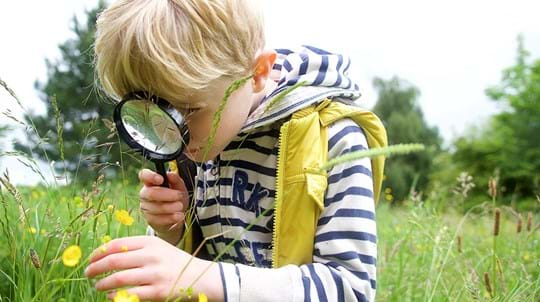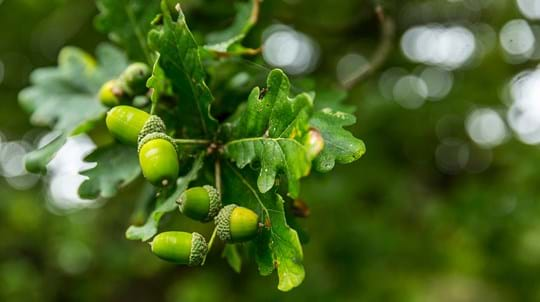
Philipshill Wood
Chorleywood

Woodland Trust wood
31.43 ha (77.66 acres)
TQ017954
Explorer 172
OS Landranger 176
Bluebells blooming below a canopy of translucent beech leaves is a springtime highlight of this ancient woodland. On the old border between the kingdoms of Wessex and Mercia, Philipshill Wood is less than an hour’s travel time from central London and offers a haven of quiet seclusion all year round.
Features
- Parking nearby
- Public access
- Spring flowers
How to get to Philipshill Wood
Philipshill Wood occupies a south-west facing ridge on the Buckinghamshire/Hertfordshire border. The 31.4-hectare (77.7-acre) wood lies between the villages of Chorleywood and Chalfont St. Giles and within the Chilterns Area of Outstanding Natural Beauty (AONB).
Leave the M25 at Junction 17 (Maple Cross/A412). At the roundabout, take the third exit onto Long Lane and drive for 1.6km (1 mile). Continue on to Heronsgate Road and, after 320 metres (350 yards) go left onto Old Shire Lane. The entrance to Philipshill Wood is on the right-hand side, after approximately 280 metres (300 yards).
Chorleywood is on the Metropolitan Underground Line and the Chiltern Line.
The wood is about 2km (just over 1 mile) from the station.
Visit National Rail for more information.
The closest bus stop is near The Stag in Chorleywood.
Visit Traveline for more information.
Facilities and access
The best way to get to Philipshill Wood is via the public bridleway that links with Old Shire Lane. There is limited parking available off the bridleway. There is also a public footpath to the wood at the north of the site.
Within the wood, there are lots of permissive paths that allow for circular walks. Some are steep in places and, though unsurfaced, they are suitable for walking throughout much of the year due to the stony, chalky soil.
There is some limited free car parking available near the wood. There is paid car parking available at the Chorleywood Station and at the Ferry Car Park, both in Chorleywood town.
The nearest public toilets are at Dovecote Close and Woodside Meadow in Amersham, which is 7.7km (just under 5 miles) from the wood.
Wildlife and habitats
Animals
Philipshill Wood is teeming with wildlife. It’s home to a huge variety of moths as well as butterflies, tawny owls and other woodland birds like the great spotted woodpecker and nuthatch.
Trees, plants and fungi
The canopy at Philipshill Wood consists of trees that were planted either in the 1960s for timber production or in the 1990s in our woodland restoration efforts. The varied woodland at Philipshill also has a reputation for its show of bluebells, which are at their best in April and May, as well as other ancient woodland indicator species, such as yellow archangel.
As the Trust continues to work on restoring the woodland, all trees felled will have their timber extracted by Clydesdale horses. Using horses has less impact on the wood’s archaeology and flora and fauna than using machinery.
Habitats
Over centuries, Philipshill Wood has been a working woodland. It has been felled and replanted many times in its history. It was largely replanted between 1965 and 1975 with non-native conifers and beech. We are now working to restore these areas.
History of Philipshill Wood
Philipshill Wood is an ancient woodland site. However, most of its mature trees have been felled – many of them during the Second World War. Previously it was a mainly beech woodland that produced timber for the Chilterns furniture industry and for rifle butts for the war effort.
Much of the wood was replanted between 1965 and 1975 with non-native conifers as well as some beech. The remainder was replanted in 1991 with a mixture of broadleaved trees. We acquired the wood in 1994.

Credit: Rob Read / WTML
Archaeology
In the wood, there are clues to its past use in the form of two large earth-banked enclosures as well as former chalk pits and saw pits. Its internal hedgerows are estimated to be around 900 years old.
The lane running along the woodland’s eastern boundary is called Old Shire Lane and it forms the county boundary between Buckinghamshire and Hertfordshire. A prominent wood bank separates this lane from the woodland.
Old Shire Lane is a typical green lane and is characteristic of ancient trackways. A large sarsen stone is thought to be glacial and may have been placed to mark the ancient boundary, which is believed to have been part of the historic boundary between Wessex and Mercia.
Things to do in Philipshill Wood
Walking
The Chiltern Way passes along the southern edge of Philipshill Wood. A circular walking route, the Way, is around 200km (125 miles) long and takes in much of the Chilterns Area of Outstanding Natural Beauty (AONB).
Visit the Chiltern Society for more information.

Visiting woods
Walking dogs in our woods
Dogs are welcome for walkies in our woods. Take a look at our tips and guidelines for ensuring we keep our woods safe and special for dogs and wildlife.

Visiting woods
Events
Discover events at our woods and the festivals and fairs you can find us at soon.

Visiting woods
Things to do in the woods
Go on an adventure. Get closer to nature. Uncover history. Discover ways to explore the UK's woods whatever the season.















































